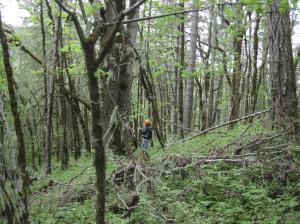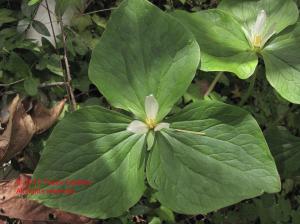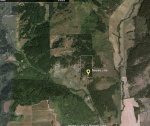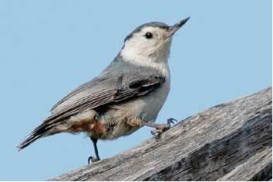This is a gallery of landscape changes in our little corner of the world. In a very short time (1994-2012), the local vegetation has been altered by land management quite dramatically. From our perspective (our 20-acre rectangle) it often seems overwhelming.
In 2005 we had a comfortable buffer of forest around us for the birds and wildlife we like to watch. We knew it was tree farm country, so logging was a given but, patchy as it was, it didn’t seem too traumatic. You can see the tree farms mostly blanketing the area in the earliest GoogleEarth map.
Then came a shift in land use – ‘conversion’ is the term – from timber to vineyards. Watch the photos as the trees begin to disappear. Vineyards and orchards sound like a sort of idyllic alteration, but think just a minute about what that entails. Conversion from old growth to tree farms is a step away from diverse, patchy habitat of a particular kind: spotted owls, flying squirrels, really big trees with a lot of carbon stored in their massive trunks, a lot of cavities for owls and other specialists. Old growth trees (250+ yrs) that store and hold – sequester – more carbon than any other type of forest. You can see that even in the earlier views, the connectivity between patches is important – those are corridors that allow wildlife and plants to move across the landscape either to escape the clearcutting or to find food or mates.
Timber farms, especially smaller ones cut in patches on a long rotation, (time between cuts), shelter many important organisms while they grow, and if those plants and animals are lucky, they can shift over to another patch when the clearcut begins. Technically, people are required to leave a certain number of trees and snags, but the rules about that are so lenient that it doesn’t really amount to anything ecologically important in most cases on private land. Federal forests are another story, as they are managed differently. The other thing about forestry is that there are relatively long periods between soil disturbance.
Now, step it up one notch with conversion from timber land to row crops, vineyards, or a hazelnut orchard. If you look, you can see that to the north and east of our 20 acres, all trees were removed, conifer, oak, even the ones that were formerly left by commercial forestry. Stumps were bulldozed, burned, and the land plowed. Two major changes that occur now are the absence of trees and shrubs, and soil disturbance on a regular schedule. Weed control and monoculture demand constant spraying, plowing, or both. All these activities restrict plant life and, importantly, affect the insects that can survive in disturbed habitat.
Unless a farm, orchard, or vineyard is conscientiously managed to leave patches of undisturbed habitat for native ground nesting bees, predatory insects, and other beneficials, the landscape is a depauperate one compared to a natural one.
In the gallery above, you can view the transition from 1) patchy timber harvest to 2) clearcuts on a larger scale (there is a large absentee landowner to the north and east of us who is progressively extracting all the monetary value from his timber, then selling off the land) then 3) conversion to vineyard to the east and north. Note the extremely clean patches and rows of plowed and planted crops. Oak trees that were left after cutting douglas firs were stripped off the land and sold for firewood. Thankfully, a few trees were left around a low spot on the east side, that is the source of a stream that flows across our property and down to Deer Creek. However, our hydrology is permanently altered. Erosion from the force of high water flows, and lower flows in summer are byproducts of vegetation stripped off the soil surface.
Next week – the closeup view of our patch before and after we acquired it.



















































